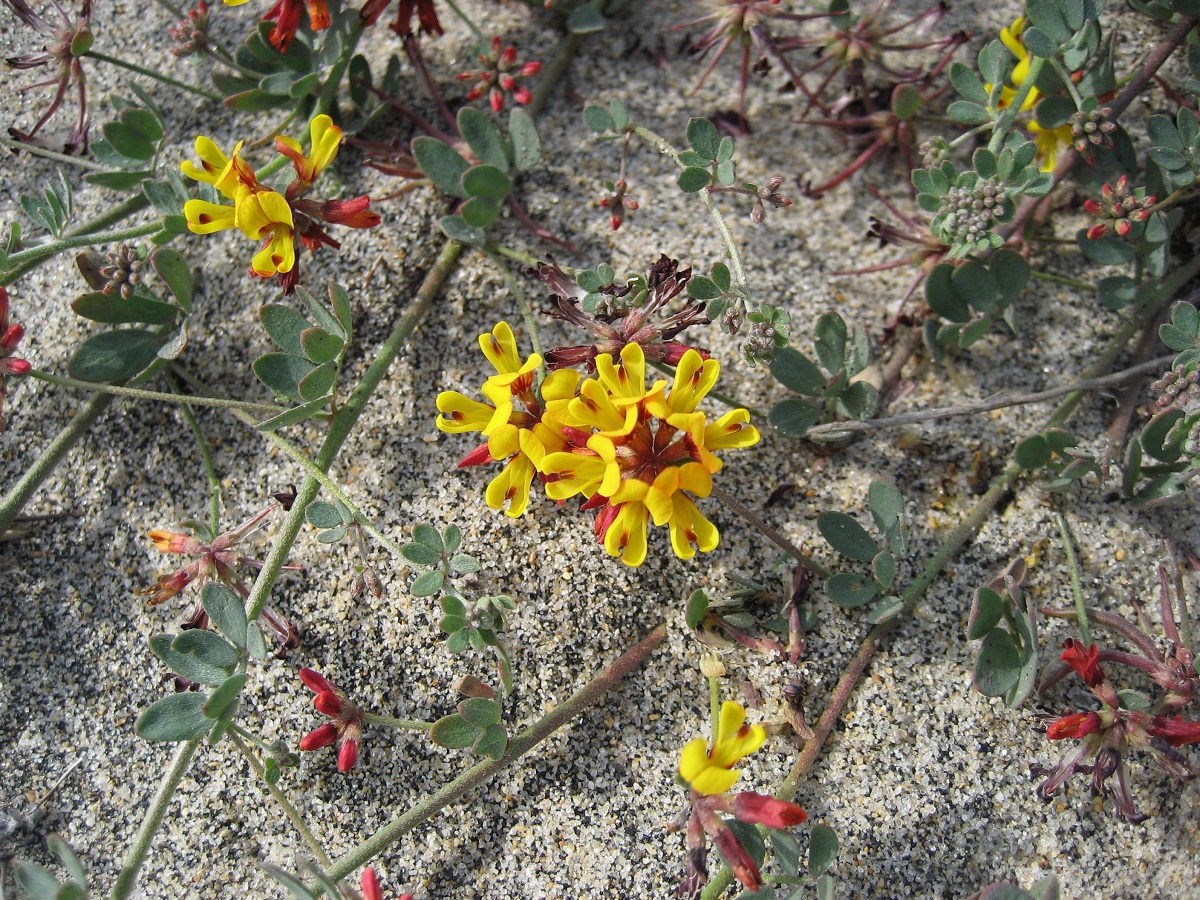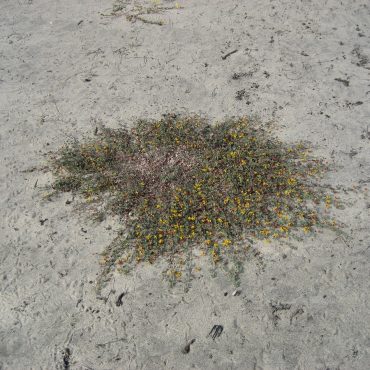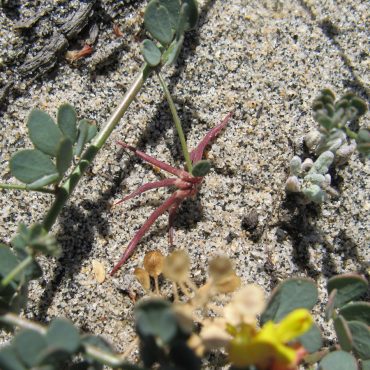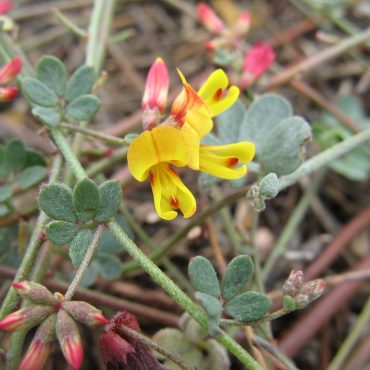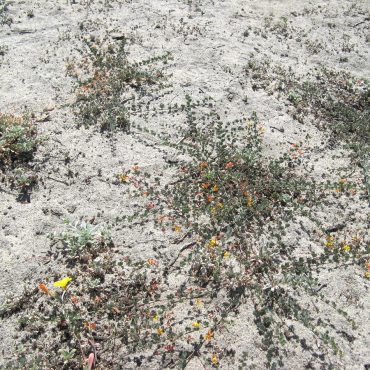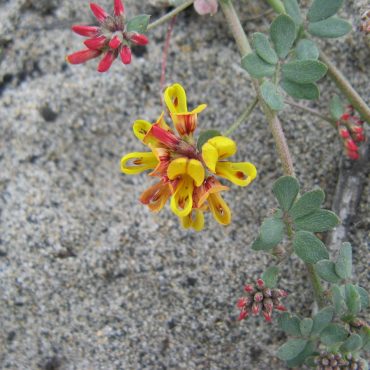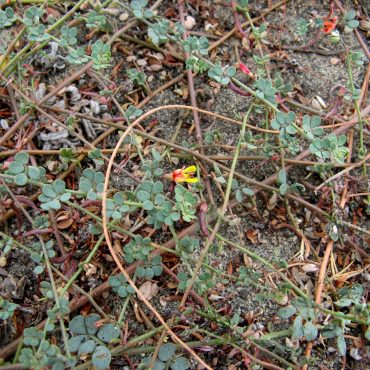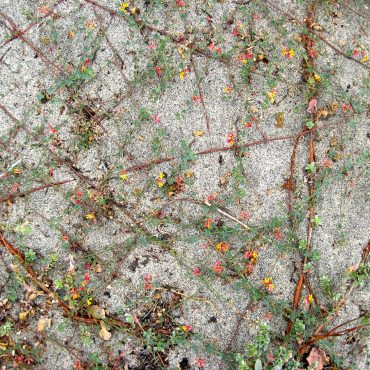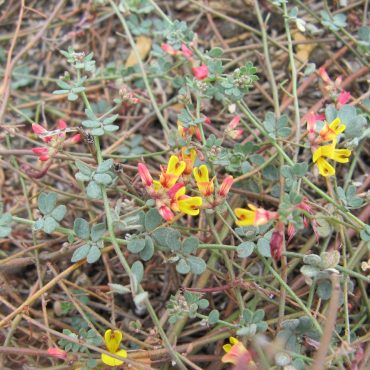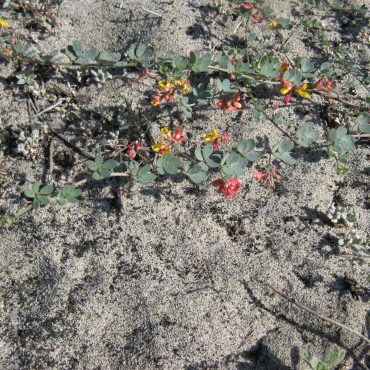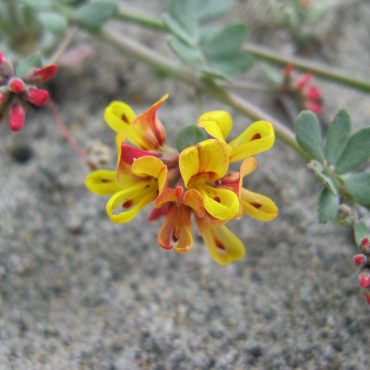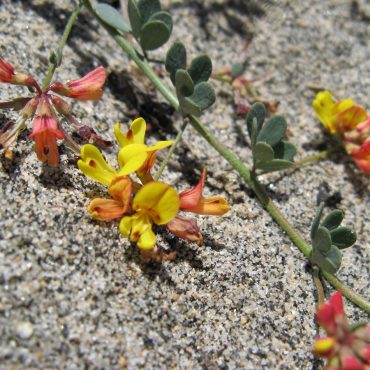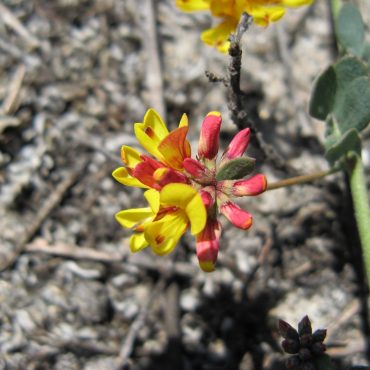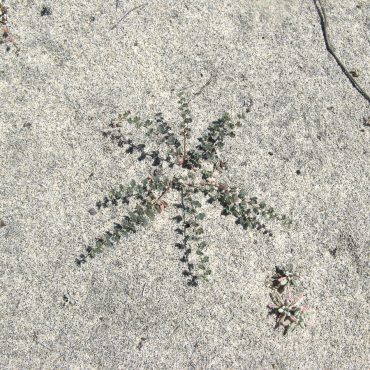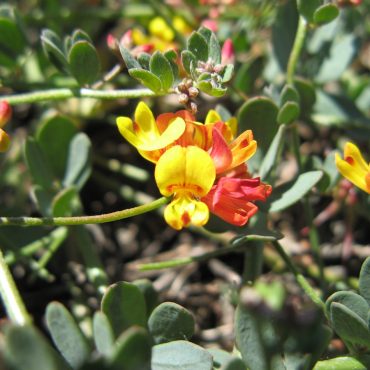Nuttall’s lotus (Acmispon prostratus) is a plant of coastal dunes – a low sprawling plant that hugs the ground as if to keep the sand beneath from blowing away. The flowers are small, but showy, with bright yellow petals streaked and spotted with clear red.
Nuttall’s lotus is native to a slender strip of coastal strand habitat between Oceanside and northern Baja California. This habitat is seriously threatened by encroaching development, recreational activities and military use. As a consequence Nuttall’s lotus is one of several sand dune plants and animals that are facing extirpation in San Diego County.
The need to protect this vanishing habitat lead the Nature Collective to undertake a series of restoration projects in the West Basin of San Elijo Lagoon and along Cardiff State Beach, culminating in the establishment of the Cardiff Living shoreline in 2019. Nuttall’s lotus and several other endangered species, from coast woolly heads to legless lizards to snowy plovers, now thrive in a secure habitat.

